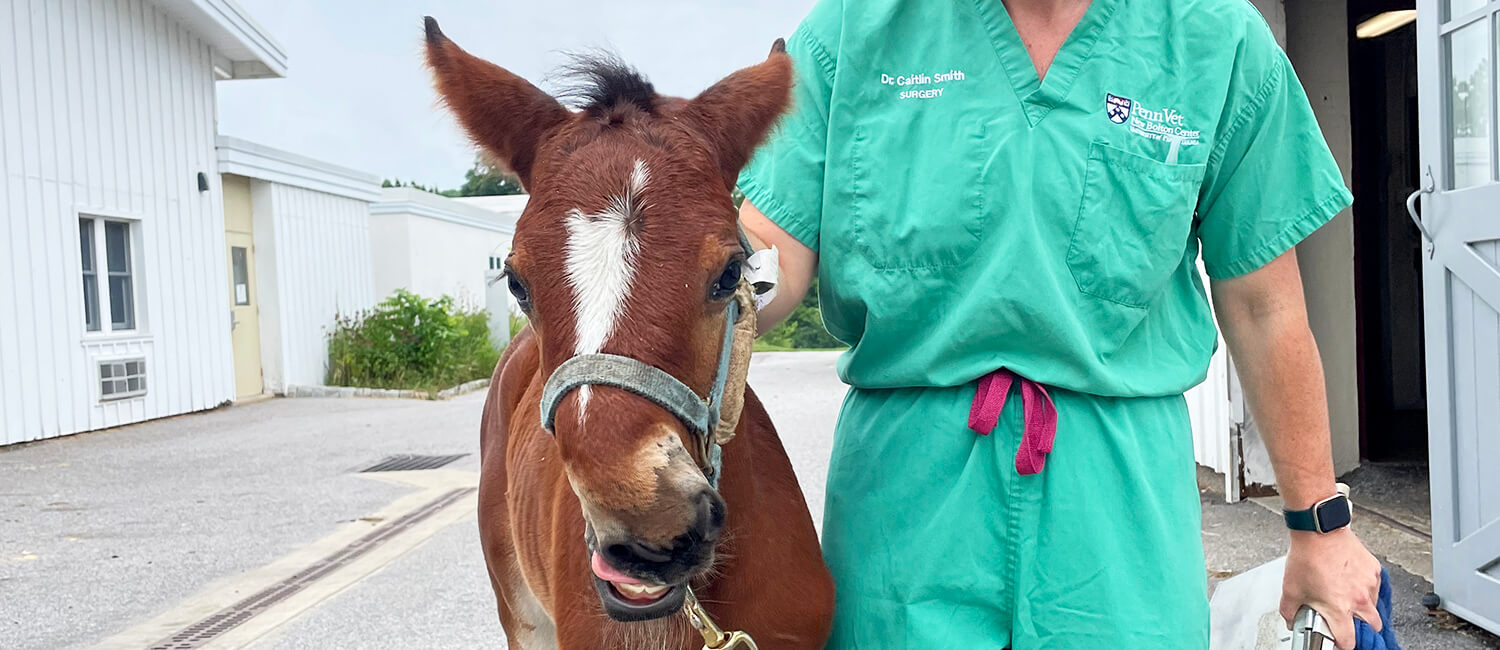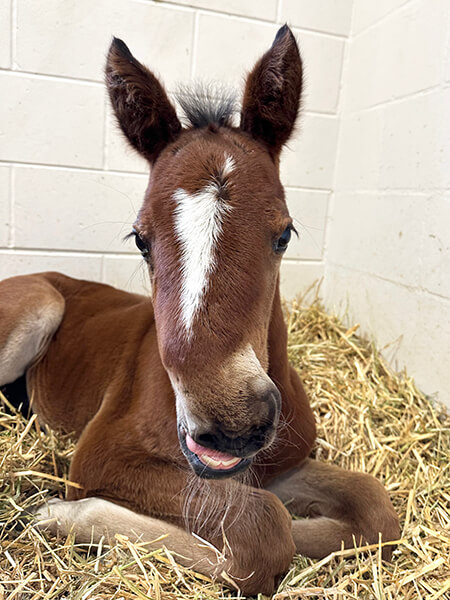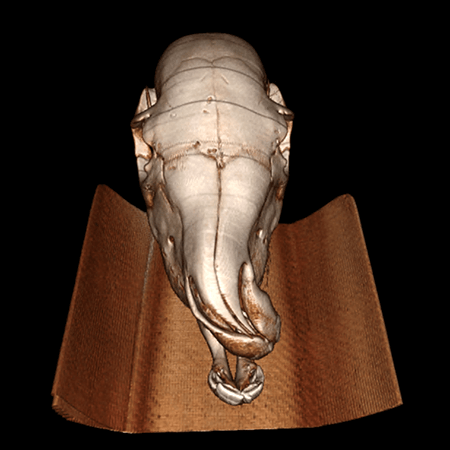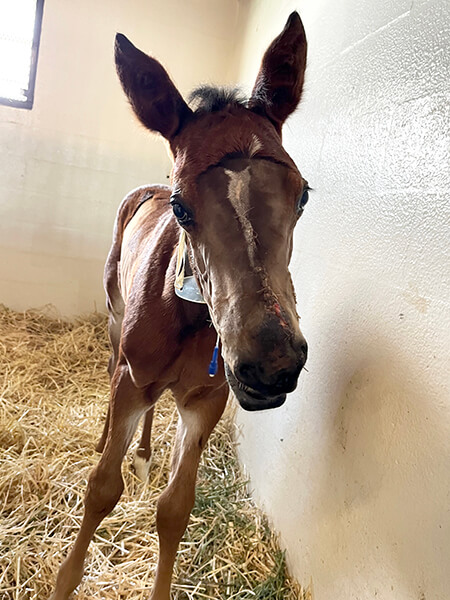
From the very beginning, there was something special about Coco Chanel 23. And it wasn’t just that the filly was born with a 45-degree twist to her muzzle.

Foaled in May, the Standardbred newborn had a vibrant energy – a sweetness and a strength. While her facial deviation – clinically known as Wry nose – made it difficult for her to nurse no matter how many times she tried, she kept trying. With one nostril completely closed, she struggled to breathe but still found it within herself to nuzzle her dam, Coco, and to cheerfully greet the humans who’d assisted in her birth.
It was clear the filly could not live a comfortable life without major medical intervention. And even if that went well, it was extremely unlikely that she would be able live up to her potential as an equine athlete. But that didn’t matter to her owner, Matt Morrison of Morrison Racing.
Shortly after her arrival into the world, the veterinarian who assisted in Coco Chanel 23’s foaling contacted Morrison to alert him to the filly’s extreme deformity. Even with possible surgical intervention, it was unclear if she’d ever live a comfortable life. The foal’s future was in Morrison’s hands, and he knew what the general response was for this type of condition in such a young horse: “’They’d say, ‘The best thing is to put ‘em down,’” Morrison says.
But Morrison didn’t want to euthanize the filly. His teenage daughter agreed, saying they had to at least give the foal a chance.
“There was a fight in her. She didn’t know she was abnormal. She just knew she needed to feed and was persistent,” he says. “Without that fighting spirit, she probably wouldn’t have survived that first weekend.”
Fittingly, the Morrisons gave the filly a different nickname: Wry Not.
One of the most severe cases of wry nose a surgeon had ever seen
Armed with her steely tenacity, Wry Not was sent to the large animal hospital at the University of Pennsylvania’s School of Veterinary Medicine’s (Penn Vet) New Bolton Center, where a multidisciplinary team of clinical specialists were prepping to give her a shot at a long, healthy life.
 Wry nose, especially cases as severe as Wry Not’s, are not common. The filly’s surgical team, Dr. Kyla Ortved, DACVS, DACVSMR, and Dr. Jose Garcia-Lopez, DACVS, DACVSMR, say they’ve each seen at most three cases.
Wry nose, especially cases as severe as Wry Not’s, are not common. The filly’s surgical team, Dr. Kyla Ortved, DACVS, DACVSMR, and Dr. Jose Garcia-Lopez, DACVS, DACVSMR, say they’ve each seen at most three cases.
“It was a severe deviation, the most extreme that I’d ever seen,” Garcia-Lopez says. “Where it was bent also made (surgery) more complicated.”
Before undergoing the complex and technically demanding reconstructive procedure, the filly was first stabilized by an internal medicine team led by Dr. Michelle Abraham, DACVIM.
“In order to be considered a good surgical candidate, it was important to ensure (Wry Not) was in excellent systemic health,” Abraham says.
Because the filly struggled to nurse, one of the biggest concerns was the transfer of passive immunity: Foals must consume colostrum from their mare, beginning within two hours after birth. Another problem: An ultrasound of Wry Not’s lungs showed mild changes consistent with aspiration pneumonia.
Abraham’s team installed a feeding tube that provided Wry Not supplemental colostrum and hyperimmunized plasma. They also started the foal on antibiotics.
“Any local infection could have disastrous effects on the outcome,” Abraham says. “Antibiotic therapy and continued nutritional support were important for (Wry Not) to overcome her initial challenges.”
A nose job – and a new lease on life

Before the surgeons could plot the best ways forward, doctors took a scan of the filly’s muzzle using New Bolton Center’s OmniTom, a mobile CT scanner that delivers high quality, point-of-care imaging. They also collected some blood from Coco for a transfusion that Wry Not would eventually need to make it through the procedure successfully.
“There wasn’t a lot of room for error,” Garcia-Lopez recalls. “There was a lot of measuring and careful cutting.”
Three hours would pass before the filly’s life-changing and life-saving operation was finally completed. Post-surgery, Wry Not’s care team was delighted to find the filly “bright,” and able to nurse normally from Coco as well as nibble hay.
“A case like (Wry Not’s) is very much a team effort,” Ortved notes. “There’s everyone from the NICU that admitted her and kept her alive, the anesthesiologist who handled this difficult case, the radiologist, the equine dentist, and many other specialists. When there’s an intense case like this, there’s a huge care team, including nurses, staff, residents, interns and vet students.”
While the filly will now have an otherwise happy and healthy life, her nose will never be perfectly straight.
Ortved says the team fondly jokes that because of Wry Not’s one-of-a-kind look, she’s “a foal only a mother could love.”
“And a surgeon,” Garcia-Lopez adds.
“And me and my daughter,” finishes Morrison.